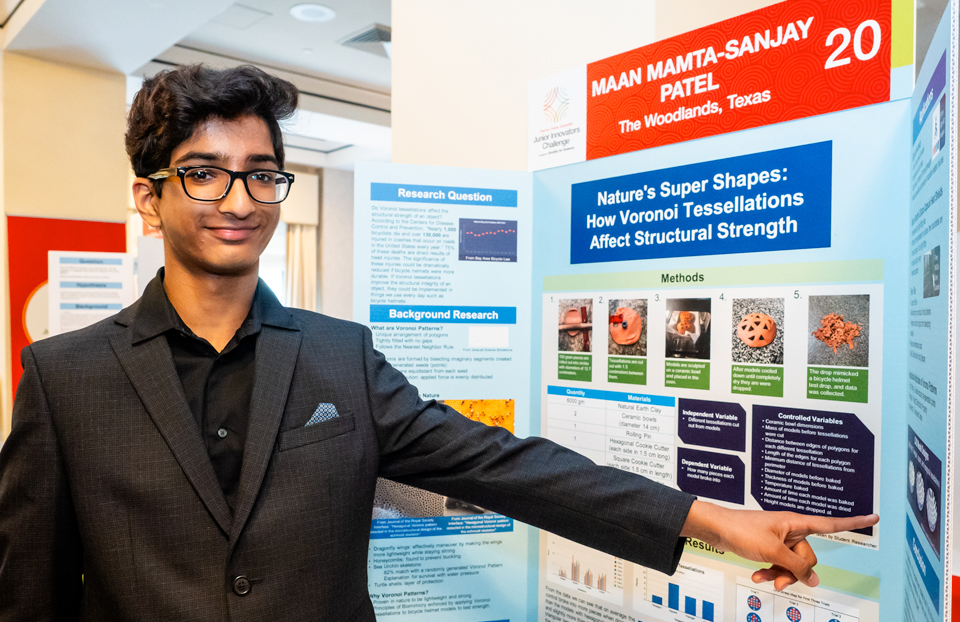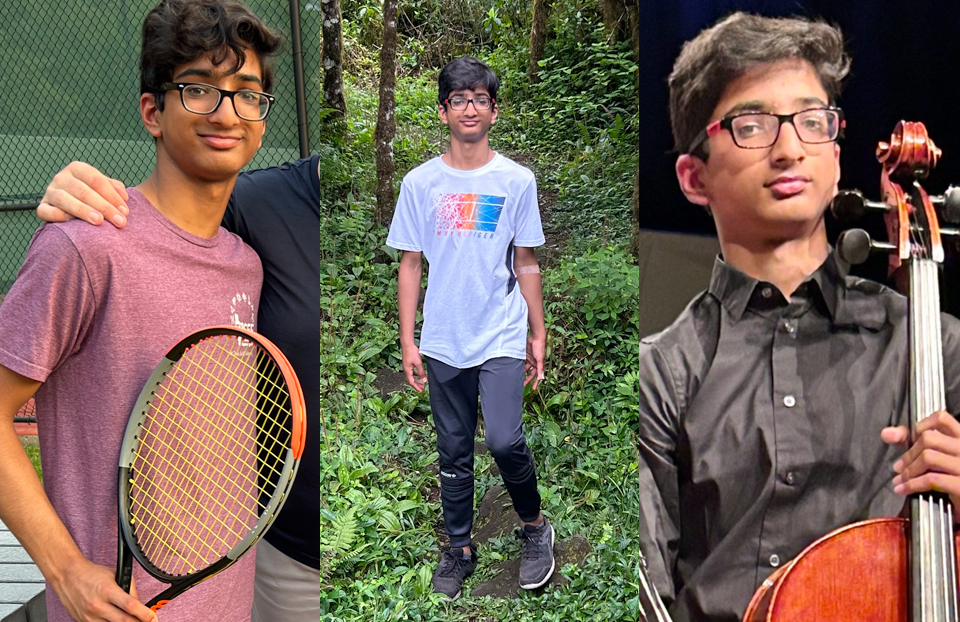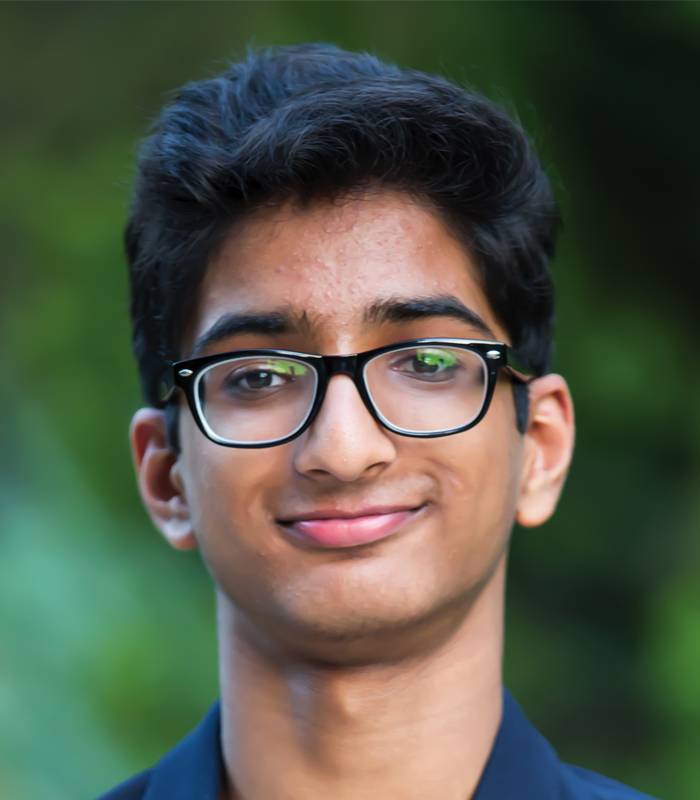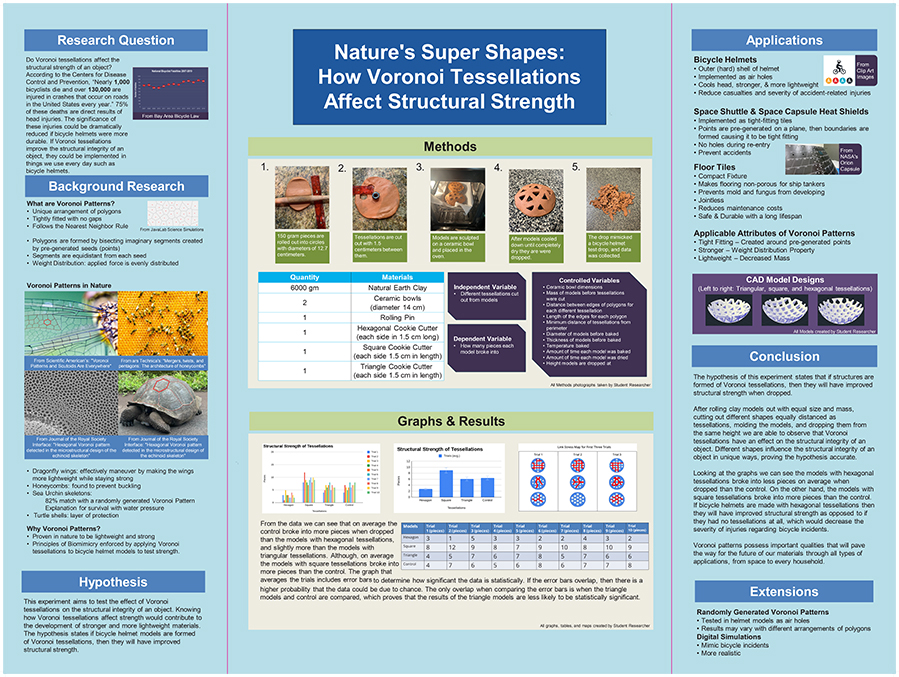Maan Mamta-Sanjay Patel
7th Grade, McCullough Junior High School
The Woodlands, TX
Maan used Voronoi patterns, which he says can be found in nature as structural reinforcers for sea urchins and honeycombs, to improve model bike helmet strength.
Nature’s Super Shapes: How Voronoi Tessellations Affect Structural Strength
VIEW POSTERProject Background
“In my family, we bike a lot,” Maan says. “And one thing that is always on our parents’ minds is safety.” But he was surprised to learn that in the United States, over 130,000 cyclists are injured and 1,000 are killed each year. Often, it’s due to weak or faulty safety gear. That hit close to home for Maan because a helmet saved his dad’s life during a skiing accident a few years ago. Maan thought turtle shells resembled helmets and found that the shells’ scales are organized in specific mathematical arrangements. Called Voronoi patterns, these divide a surface into specific shapes that form around pre-determined points. Since they often make structures stronger, Maan thought Voronoi patterns might make sturdier, lighter helmets.
Tactics and Results
Maan first designed bike helmets with repeated patterns of hexagonal, square or triangular cutouts. He then created clay versions of the helmets that were 12.7 centimeters, or 5 inches, in diameter. He also made control helmets with no cutouts. To test their strength, Maan dropped 10 of each helmet design with their open side facing up. He recorded how many pieces the helmets broke into and found that the one with hexagonal tessellations performed the best. On average, helmets with cutouts of this shape broke into 2.8 pieces. Control helmets, on the other hand, broke into 6.1 pieces on average. And helmets with square cutouts shattered into even more pieces. “This suggests that hexagonal tessellations increase the amount of force necessary to break a helmet, improving its overall safety and strength,” Maan says.

Beyond the Project
The next steps would involve using better tools to determine helmet strength, and to test various applications of Voronoi patterns. They could be used for oil tankers at sea or heat shields on capsules in space, he notes.
Other interests
Maan enjoys several extra-curricular activities, including tennis, piano, Science Bowl and martial arts. Overall, he loves to compete. “Competing to me is a wonderful sport,” he says, “yes because of the glory of winning, but also because I can learn even more and improve my skills.” Science has always been Maan’s favorite class, so he’d like to become a science teacher one day.


